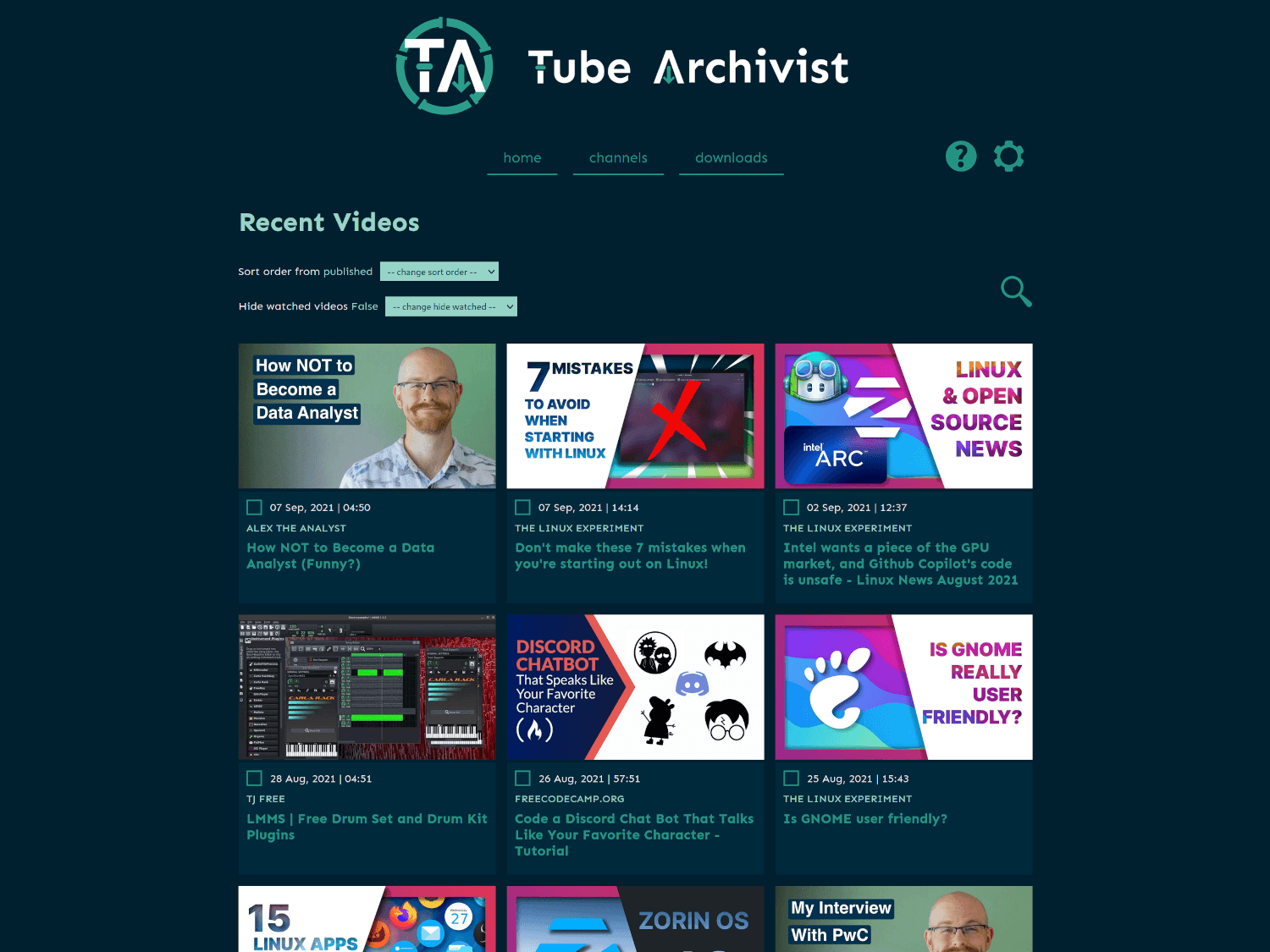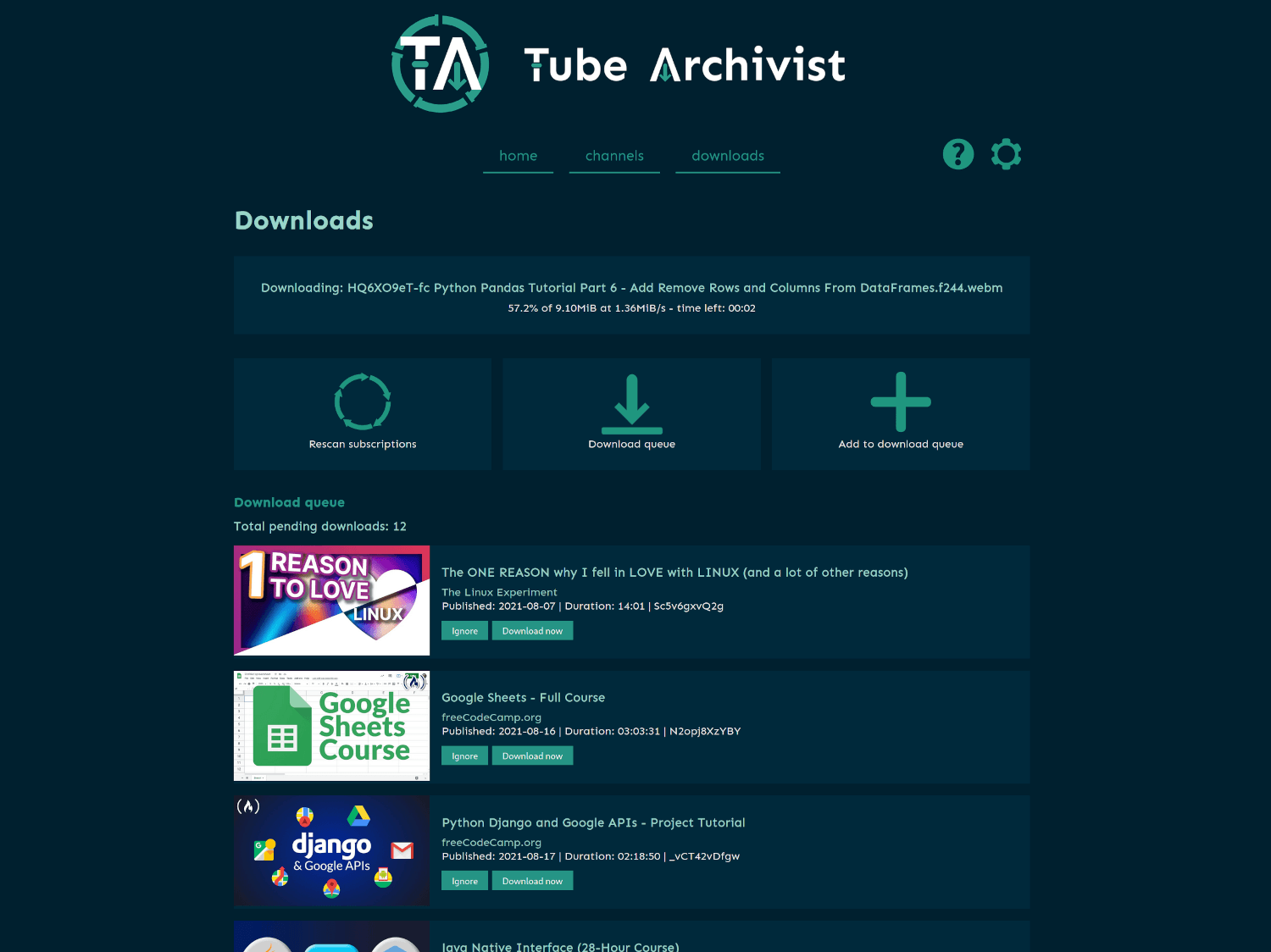The Tube Archivist
Your self hosted Youtube media server
Core functionality
- Subscribe to your favourite Youtube channels
- Download Videos using yt-dlp
- Index and make videos searchable
- Play videos
- Keep track of viewed and unviewed videos
Screenshots
Problem Tube Archivist tries to solve
Once your Youtube video collection grows, it becomes hard to search and find a specific video. That's where Tube Archivist comes in: By indexing your video collection with metadata from Youtube, you can organize, search and enjoy your archived Youtube videos without hassle offline through a convenient web interface.
Installation
Take a look at the example docker-compose.yml file provided. Tube Archivist depends on three main components split up into seperate docker containers:
Tube Archivist
The main Python application that displays and serves your video collection, built with Django.
- Serves the interface on port
8000 - Needs a mandatory volume for the video archive at /youtube
- And another recommended volume to save the cache for thumbnails and artwork at /cache.
- The environment variables
ES_URLandREDIS_HOSTare needed to tell Tube Archivist where Elasticsearch and Redis respectively are located. - The environment variables
HOST_UIDandHOST_GIDallowes Tube Archivist tochownthe video files to the main host system user instead of the container user.
Elasticsearch
Stores video meta data and makes everything searchable. Also keeps track of the download queue.
- Needs to be accessable over the default port
9200 - Needs a volume at /usr/share/elasticsearch/data to store data
Follow the documentation for additional installation details.
Redis JSON
Functions as a cache and temporary link between the application and the filesystem. Used to store and display messages and configuration variables.
- Needs to be accessable over the default port
6379 - Takes an optional volume at /data to make your configuration changes permanent.
Getting Started
- Go through the settings page and look at the available options. Particularly set Download Format to you desired video quality before downloading.
- Subscribe to some of your favourite Youtube channels on the channels page.
- On the downloads page, click on Rescan subscriptions to add videos from the subscribed channels to your Download queue or click on Add to download queue to manually add Video IDs or links.
- Click on Download queue and let Tube Archivist to it's thing.
- Enjoy your archived collection!
Potential pitfalls
Elastic Search in Docker requires the kernel setting of the host machine vm.max_map_count to be set to least 262144.
To temporary set the value run:
sudo sysctl -w vm.max_map_count=262144
To apply the change permanently depends on your host operating system:
- For example on Ubuntu Server add
vm.max_map_count = 262144to the file /etc/sysctl.conf. - On Arch based systems create a file /etc/sysctl.d/max_map_count.conf with the content
vm.max_map_count = 262144. - On any other platform look up in the documentation on how to pass kernel parameters.
Roadmap
This should be considered as a minimal viable product, there is an exstensive list of future functions and improvements planned:
- Scan your filesystem to manually add videos
- Access controll
- User roles
- Delete videos and channel
- Create playlists
- Show similar videos on video page
- Import existing downloaded archive
- Multi language support
- Backup and restore
Known limitations
- Video files created by Tube Archivist need to be mp4 video files for best browser compatibility.
- Every limitation yt-dlp will also be present in Tube Archivist. If yt-dlp can't download or extract a video for any reason, Tube Archivist won't be able to either.
- For now this is meant to be run in a trusted network environment.





